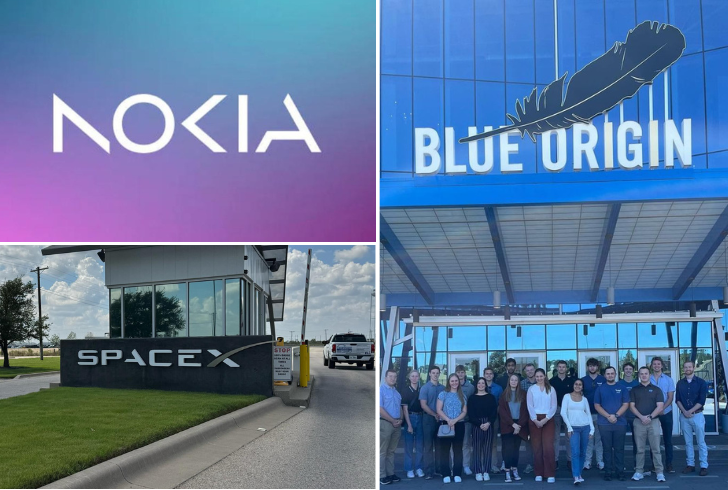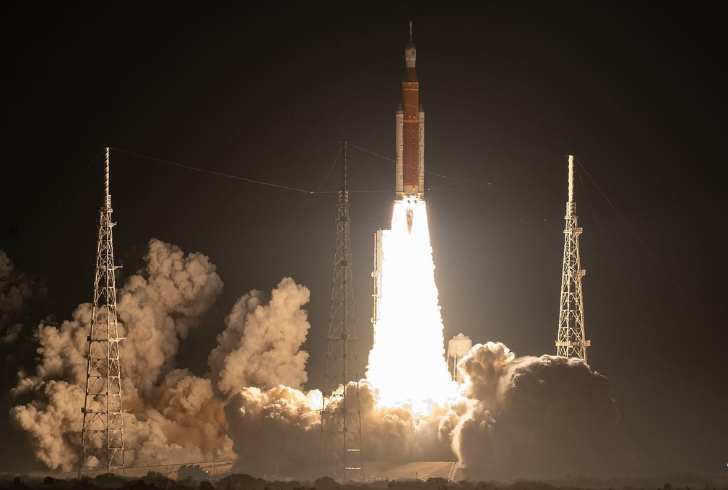As the moon becomes the next destination for human exploration, NASA is leading the charge to make it more than just a scientific endeavor. The upcoming Artemis missions aim not only to return astronauts to the lunar surface but also to lay the groundwork for human settlements and commercial ventures beyond Earth.

Private companies, including familiar names like SpaceX, Blue Origin, Nokia, Lockheed Martin, and General Motors, are teaming up with NASA to develop solutions for lunar missions. This collaborative effort is not just about science; it’s about business. The moon is poised to become a bustling hub of activity, with opportunities for entrepreneurs to capitalize on its unique resources and strategic location.
Commercial Prospects of the Moon: A $100 Billion Market
Prachi Kawade, a senior analyst at NSR, estimates that the emerging lunar market is worth over $100 billion. The Artemis missions, unlike the Apollo missions of the past, focus on sustained human presence, creating a continuous cycle of lunar missions. This opens up a range of commercial opportunities, from mining resources to building infrastructure for future settlers.
Mining the Moon: Unearthing Treasures
The moon holds valuable resources that could revolutionize industries on Earth and pave the way for further space exploration. Companies are eyeing regolith, the scientific term for moon dust, as a potential source of helium-3 for clean energy or construction material for lunar structures. Rare-earth elements left behind by meteorites crashing into the moon could be mined for advanced electronics.
However, the most lucrative resource is water. Caches of water near the moon’s poles could be extracted and used as fuel for rockets heading to Mars, turning the moon into a pit stop on the way to further exploration.
NASA’s Commercial-First Approach: Fostering Innovation

Artemis is part of NASA’s broader strategy to involve the commercial sector in space exploration actively. The agency, with a “real commercial-first mindset,” awards contracts to private companies, fostering competition and innovation. This approach has led to the rise of companies like Blue Origin and SpaceX, which might not have existed without NASA’s ambitious lunar plans.
Building Lunar Infrastructure: A Boon for Entrepreneurs
Entrepreneurs are already finding opportunities in building the necessary infrastructure for lunar activities. Pittsburg-based Astrobotic Technology secured a $320 million contract for delivering payloads to the moon through NASA’s Commercial Lunar Payload Services program. The company’s Volatiles Investigating Polar Exploration Rover (VIPER) is set to explore the moon’s south pole in 2024, searching for traces of water ice.
Intuitive Machines, a Texas-based space exploration company, won a $77 million contract for three payload missions, including the Polar Resources Ice Mining Experiment-1 (PRIME-1) drill, designed to test for ice below the moon’s surface.
Lockheed Martin is working on a concept proposal for nuclear power reactors on the moon, emphasizing the need for sustainable energy for future settlements. General Motors, in collaboration with Lockheed Martin, is developing a battery-powered lunar rover for extended exploration.
Connectivity and Navigation: Bridging Gaps in Lunar Technology
The moon currently lacks GPS, Wi-Fi, and other essential infrastructure for long-term human presence. Recognizing this, NASA has awarded a $14 million contract to Nokia to deliver internet to the moon. By 2024, Nokia aims to establish a 4G network on the lunar surface, facilitating communication and navigation for future missions.
Space Race 2.0: The Geopolitical Stakes

The renewed interest in lunar exploration is not just about science and commerce; it’s also a geopolitical race. The United States, along with more than 24 space-faring nations, has signed the Artemis Accords, outlining rules for international cooperation on the moon. China, however, has pursued an independent path, leading to a competitive dynamic reminiscent of the space race during the Cold War.
As nations and private companies race to establish a presence on the moon, the first-mover advantage becomes crucial. The rules and standards set during these initial missions could shape the future of lunar exploration and resource utilization.
A Lunar Future Beckons
The moon is no longer a distant celestial body but a frontier for exploration and entrepreneurship. NASA’s Artemis missions, fueled by collaboration with private companies, mark the beginning of a new era in space exploration. As entrepreneurs race to capitalize on the moon’s resources and strategic significance, the possibilities for innovation and economic growth are boundless. The moon, once just a silvery dot in the night sky, is now open for business, inviting humanity to reach for the stars.
